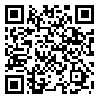Tue, Jul 1, 2025
[Archive]
Volume 35, Issue 1 (1-2021)
Med J Islam Repub Iran 2021 |
Back to browse issues page
Download citation:
BibTeX | RIS | EndNote | Medlars | ProCite | Reference Manager | RefWorks
Send citation to:



BibTeX | RIS | EndNote | Medlars | ProCite | Reference Manager | RefWorks
Send citation to:
Forghani S F, Jahangiri R, Ghasemi F, Shirani R, Bagheri H, Mahmoodi R et al . Economic Burden of Epidermolysis Bullosa Disease in Iran. Med J Islam Repub Iran 2021; 35 (1) :1090-1095
URL: http://mjiri.iums.ac.ir/article-1-7229-en.html
URL: http://mjiri.iums.ac.ir/article-1-7229-en.html
Siamak Farokh Forghani 

 , Reza Jahangiri
, Reza Jahangiri 

 , Farzaneh Ghasemi
, Farzaneh Ghasemi 

 , Reza Shirani
, Reza Shirani 

 , Hosein Bagheri
, Hosein Bagheri 

 , Razieh Mahmoodi
, Razieh Mahmoodi 

 , Saeed Bagheri Faradonbeh
, Saeed Bagheri Faradonbeh 




 , Reza Jahangiri
, Reza Jahangiri 

 , Farzaneh Ghasemi
, Farzaneh Ghasemi 

 , Reza Shirani
, Reza Shirani 

 , Hosein Bagheri
, Hosein Bagheri 

 , Razieh Mahmoodi
, Razieh Mahmoodi 

 , Saeed Bagheri Faradonbeh
, Saeed Bagheri Faradonbeh 


Health Management and Economics Research Center, Iran University of Medical Sciences, Tehran, Iran , bagheri.s@iums.ac.ir
Abstract: (2109 Views)
Background: Epidermolysis bullosa (EB) is prevalent in Iran and incurs direct and indirect costs on the health care system and the patient.Therefore, this study was conducted to estimate the economic burden of this disease in Iran.
Methods: This study includes all patients with EB disease who had been referred to the medical centers of Iran in 2019-2020 for treatment of their disease, especially Hazrat Fatimah Hospital and their medical records are available in Iran EB Patients Association (IEBPA). In estimating the economic burden of diseases and costing studies, we calculated the average direct and indirect costs for a patient and used it to estimate the costs of the patient population. In this study, a prevalence approach was used to calculate the economic burden of this disease. For this purpose, the existing cases of the disease in 2019-2020 were calculated. The data collected from the questionnaires that were completed through interviews with patients as well as the data extracted from the review of their files were entered into Excel software and analyzed.
Results: The total direct medical costs of direct non-medical and indirect are equal to 7.319.428.315 & 5.390.440.775 and 45.875.654.514 Rials respectively, and the total economic burden of the disease and the average of each patient is 58.585.514.604 and 155.890.789 respectively.
Conclusion: High indirect costs, especially informal care, represent the socio-economic burden of this disease and constitute more than half of the total indirect costs. Therefore, the obvious gap and hidden social costs of this disease are related to health policymakers, especially when they want to study the impact of this disease on different income classes of families.
Methods: This study includes all patients with EB disease who had been referred to the medical centers of Iran in 2019-2020 for treatment of their disease, especially Hazrat Fatimah Hospital and their medical records are available in Iran EB Patients Association (IEBPA). In estimating the economic burden of diseases and costing studies, we calculated the average direct and indirect costs for a patient and used it to estimate the costs of the patient population. In this study, a prevalence approach was used to calculate the economic burden of this disease. For this purpose, the existing cases of the disease in 2019-2020 were calculated. The data collected from the questionnaires that were completed through interviews with patients as well as the data extracted from the review of their files were entered into Excel software and analyzed.
Results: The total direct medical costs of direct non-medical and indirect are equal to 7.319.428.315 & 5.390.440.775 and 45.875.654.514 Rials respectively, and the total economic burden of the disease and the average of each patient is 58.585.514.604 and 155.890.789 respectively.
Conclusion: High indirect costs, especially informal care, represent the socio-economic burden of this disease and constitute more than half of the total indirect costs. Therefore, the obvious gap and hidden social costs of this disease are related to health policymakers, especially when they want to study the impact of this disease on different income classes of families.
Type of Study: Original Research |
Subject:
Health Management and Economics
Send email to the article author
| Rights and permissions | |
 |
This work is licensed under a Creative Commons Attribution-NonCommercial 4.0 International License. |





